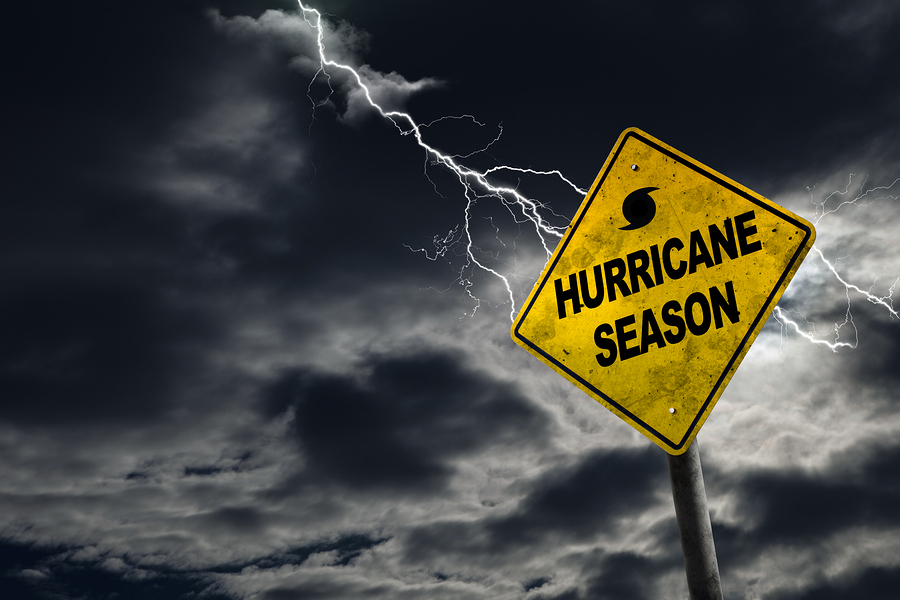Sep 4, 2019, 5:31 AM — Hurricane Dorian menaced the U.S. East Coast with devastating flooding and winds, lashing Florida after laying waste to the Bahamas in a brutal two-day battering that caused damage that may cost the islands billions of dollars.
The center of the Category 2 hurricane was located about 90 miles (145 kilometers) east of Daytona Beach, Florida, with maximum sustained winds of about 105 miles per hour, the National Hurricane Center said in public advisory at 5 a.m. local time. Earlier, it reported bands of rain moving into northeast Florida and squalls in the region.
The storm is moving north-northwest at about 8 miles per hour and should move “dangerously close” to the Florida and Georgia coasts through this evening, with its center approaching the Carolinas by Thursday, according to the NHC. President Donald Trump declared a state of emergency in North Carolina, clearing the way for his administration to coordinate disaster relief efforts as needed.
“Florida will likely dodge the worst impacts, although coastal areas will have long stretches of tropical-storm force winds later today and tomorrow,” said Todd Crawford, lead meteorologist at The Weather Co., an IBM business. The storm, though, could still make landfall north of Florida, he said.
In the Bahamas, the government discontinued all tropical storm warnings, according to the NHC. Still, Dorian has left many of the nation’s islands devastated and killed at least seven people, a death toll Prime Minister Hubert Minnis said he expects to rise. Parts of Abaco islands “are decimated” and there is “severe flooding, there is severe damage to homes, businesses and other buildings and infrastructure,” he said at a press conference.
The damage wrought upon Grand Bahama and neighboring Abaco by the “monster storm” is likely to run into “hundreds of millions if not billions,” the Nassau Guardian newspaper cited Deputy Prime Minister Peter Turnquest as saying. Large tracts of homes are under water, and the government intends to make formal appeals for assistance, he said.
On Tuesday, the Bahamas government delivered an “urgent plea” for owners of boats and jet skis to help out with post-hurricane rescue operations for residents stranded by flood waters.
“I don’t think there has been a populated area in the entire Atlantic basin in the climatological record that has experienced the severity and the intensity of impacts that Grand Bahama Island and Abaco have experienced in the past two days,” said Ryan Truchelut, president of Weather Tiger in Tallahassee, Florida.
Coastal regions as far as North Carolina are in danger of life-threatening inundation over the next 36 hours and up to southeast Virginia, over the next 48 hours, according to the NHC. The center in its latest advisory discontinued a tropical storm warning for Sebastian Inlet, south of Cape Canaveral, Florida.
Still, tropical-storm-force winds were lashing parts of northeastern Florida as bands of rain moved in Tuesday morning, Jacksonville’s Action News Jax reported on Twitter. All bridges in the city remained open in the early hours of the morning, the sheriff’s office said in a tweet.
Cities further up the coast were also bracing for the coming storm. Sandbags have been distributed in Charleston, South Carolina, and the city encouraged some residents to park their vehicles on higher ground. Local and state governments in Florida, Georgia and the Carolinas have ordered coastline residents and businesses to begin evacuations.
“Please listen to and follow all evacuation orders,” North Carolina Governor Roy Cooper said in a statement announcing a mandatory evacuation order for the state’s tourist-friendly coast. “We have seen the life and death effects of this storm in the Bahamas, and we urge everyone on the islands at the coast to leave.”
Florida Power & Light Co. had restored almost 70,000 outages by 4 p.m. local time on Tuesday as the storm moved in, according to a statement. Many of the power cuts had been due to trees and vegetation falling on equipment and power lines. The company said customers should prepare for increased outages through Wednesday.
Dorian is weakening in part because it has exhausted its supply of warm ocean water by sitting over the same spot for days, Truchelut said. He doesn’t see the storm — pulled along by a low pressure system — moving much farther west, but he said the eastern North and South Carolina are still very much at risk.
“The story of Dorian will be written in two parts,” The Weather Co.’s Crawford said. “First, the utter devastation and humanitarian crisis in parts of the Bahamas and, second, the surprise major impacts in the Southeast and Northeast U.S.” Winds that occur in the coastal areas of the Carolinas, mid-Atlantic, and even Cape Cod, may end up being stronger than what Florida will get, he said.
Was this article valuable?
Here are more articles you may enjoy.


 What The Return of California’s ‘Death Discount’ Means for Litigation
What The Return of California’s ‘Death Discount’ Means for Litigation  Storm Goretti Batters Europe With Violent Winds, Power Cuts
Storm Goretti Batters Europe With Violent Winds, Power Cuts  Allianz Built An AI Agent to Train Claims Professionals in Virtual Reality
Allianz Built An AI Agent to Train Claims Professionals in Virtual Reality  California Bill Would Require Insurer Claims Handling Plans, And Double Penalties
California Bill Would Require Insurer Claims Handling Plans, And Double Penalties 